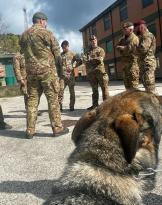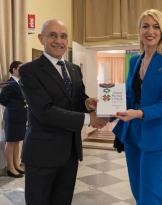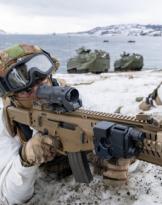The enterprise of Luigi Rizzo and his crews, on June 10, 1918, represents perhaps the most brilliant and daring naval action of the First World War, carried out by two small units of the Italian Navy who obtained a naval war result of great importance in the Adriatic. , both from a technical point of view and in terms of the emotional impact on opponents.
The section composed of the MAS 15 and 21, led by the lieutenant captain Luigi Rizzo (section head), and with the boats respectively commanded by the chief helmsman Armando Gori and the ensign Giuseppe Aonzo, sank the battleship at dawn on 10 June 1918 St. Stephen, nip in the bud a dangerous raid that the bulk of the Austrian fleet was preparing to carry out against the anti-submarine barrage organized by the Allies in the Strait of Otranto, to prevent German submarines from accessing the Adriatic.
The action took place near the small island of Premuda, in the very early morning, when the two small torpedo boats, on the return of one of the countless reconnaissance and dredging actions of the enemy mines, sight, on the starboard side, a large cloud of black smoke on the horizon. Initially believing that they were light enemy units, in pursuit of the Italian torpedoes, commander Rizzo decided without hesitation to prevent the Austrian attack, directing in turn towards the opponent, to attack him by surprise and open up fighting the way for the return.
 Approaching the enemy, the Italians unexpectedly find themselves in the presence of two large enemy battleships, escorted by a dozen destroyers.
Approaching the enemy, the Italians unexpectedly find themselves in the presence of two large enemy battleships, escorted by a dozen destroyers.
The "Operating Precepts" in force today would be defined Rules of Engagement, issued by the Navy Chief of Staff, Admiral Paolo Thaon di Revel, provided for: “Have any daring, but do not expose yourself to risk if this… does not promise you a suitable reward. Do not hesitate instead to sacrifice yourselves when serious damage may come to the enemy ".
In compliance with the directives received, the MAS attack, at close range. With a skillful and daring maneuver, the MAS 15 manages to infiltrate the escort ships, launching two torpedoes that hit the battleship St. Stephen. The other battleship, attacked by the MAS 21, is saved only due to the malfunction of the explosive warheads.
While the enemy ship sinks, the two small Italian units escape pursuit by the opposing units, managing to reach the base unscathed by raising a huge tricolor flag, the agreed symbol of a victorious battle.
 The exploits of the heroes of the Navy, engaged in operations that amazed the world, are well known. These events are often described by privileging the work of individuals, sometimes overshadowing the factors of competence, dedication and technological excellence that are an expression of the entire Navy and, ultimately, the common heritage of the entire national community. In reality, the commanders and crews are the top of a structure that includes the designers of the vehicles, as well as the workers who build them, the technicians in charge of logistics and maintenance, the operational staff who perfect training and procedures. operational.
The exploits of the heroes of the Navy, engaged in operations that amazed the world, are well known. These events are often described by privileging the work of individuals, sometimes overshadowing the factors of competence, dedication and technological excellence that are an expression of the entire Navy and, ultimately, the common heritage of the entire national community. In reality, the commanders and crews are the top of a structure that includes the designers of the vehicles, as well as the workers who build them, the technicians in charge of logistics and maintenance, the operational staff who perfect training and procedures. operational.
The top men were able to operate successfully because they had the entire Navy behind them, whose men, without distinction of rank, body or specialty, supported by technicians and civilian workers, worked for years with commitment and dedication, to prepare vehicles increasingly reliable and to train in their use with maximum safety and effectiveness. Then as today, in the wake of the traditional excellence of Italy on the sea, one unique and millenary prerogative represented, that morning in Premuda, by Luigi Rizzo.
You can learn more about the history of Premuda's company in Archival Bulletin of the Historical Office of the Navy.












